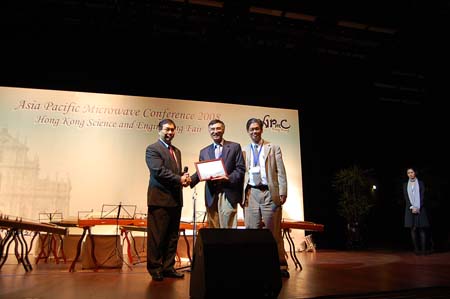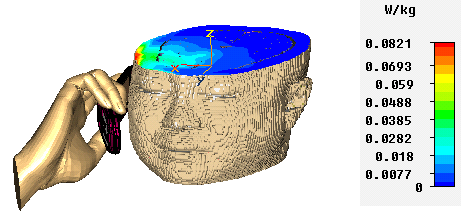Homepage
Home
Optical Processing for Next Generation Fiber Communications
Prof. Chester Shu’s team has demonstrated significant research progress in the area of optical communications as reflected by a number of research awards and paper awards. His Ph.D graduate Dr. Chow Kin-Kee received the Young Scientist Award from the Hong Kong Institution of Science (HKIS) in 2004 for his work on optical processing with nonlinear photonic crystal fiber. His another Ph.D graduate, Fok Mei Po Mable, received the prestigious IEEE LEOS Graduate Student Fellowship Award in 2005, the IEEE Hong Kong Section Postgraduate Paper First Prize in 2007, and the CUHK Best Research Output Award by research postgraduate student in the same year, based on the work in optical processing for advanced fiber-optic communication systems. Other students in his team received best paper awards from many academic conferences including the Conference on Lasers and Electro-Optics/Pacific Rim, Asia Optical Fiber Communication Conference, and the IEEE LEOS (HK) Postgraduate Conference, all in the areas of optical fiber communications.
Silicon Photonics and Nanophotonic devices
Dr T.K.Liang was awarded the Young Scientist Award by the Hong Kong Institution of Science (HKIS) (2005) for his 2004 work, while he was a PhD student in Prof Tsang’s group, in showing experimentally that silicon optical waveguides can provide over six times gain in amplifying optical pulses using Stimulated Raman scattering. Prof. H.K Tsang was awarded the Research Excellence Award 2006-2007 of CUHK, in recognition of his contributions in nonlinear silicon photonics, particularly the first measurements of nonlinearities in silicon waveguides at telecom wavelengths and on the understanding of the role of free carrier absorption in silicon Raman amplifiers. In 2006 Prof Tsang received $6.5 million funding for an ICP dry etching system and in 2008 Prof Tsang received funding from the University Grants Council totalling just over HK$10 million to purchase an electron-beam lithography system that can be used to make nanophotonic devices with feature sizes as small as 10nm.
Prof. Y.T. Zhang has been appointed by the IEEE-EMBS to be the Editor-in-Chief of IEEE Transactions on Information Technology in Biomedicine.
香港中文大學張元亭教授
當選IEEE生物醫學信息技術學報總編輯
香港中文大學電子工程系張元亭教授經選舉獲任IEEE生物醫學信息技術學報總編輯(Editor-in-Chief of IEEE Transactions on Information Technology in Biomedicine),任期始自2008年1月,爲期三年。IEEE生物醫學信息技術學報由IEEE生物醫學工程學會(IEEE Engineering in Medicine and Biology Society,即IEEE-EMBS)主辦、IEEE計算機學會(IEEE Computer Society,即IEEE-CS)技術協辦,旨在通過發表具有創新性的研究成果,推進信息技術在生物、醫療及健康等方面的應用和發展,其內容涵蓋移動醫療、生物醫學傳感、生物醫學圖像、計算生物學及生物信息學等衆多分支學科。該學報已成爲生物醫學工程, 數字醫療與生物信息領域的國際權威學術期刊,其SCI影響因子達1.5以上。
據瞭解,張元亭教授是首位擔任IEEE-EMBS學報主編的亞太區學者。張教授現任香港中文大學生物醫學工程學部主任,生物醫學工程聯合研究中心主任,中山大學生物醫學工程系(兼)系主任。2006年,張教授獲頒國際醫學與生物工程院院士(Fellow of International Academy for Medical and Biological Engineering,即FIAMBE)、IEEE Fellow以及美國醫學與生物工程院院士(Fellow of American Institute for Medical and Biological Engineering,即FAIMBE)等榮銜。同年,更因其在國際上推廣和發展生物醫學工程方面的杰出貢獻而榮獲2006年度IEEE-EMBS服務獎。
The paper titled “Development of The First Chinese Electromagnetic Human Model and Its Use for SAR Calculations” received Asia-Pacific Microwave Conference (APMC) prize in 2008 Asia-Pacific Microwave Conference held in Hong Kong during Dec. 16-20, 2008.
Development of The First Chinese Electromagnetic Human Model and Its Use for SAR Calculations
Ke-Li Wu1, Pheng Ann Heng2, Xin Gao1, Yongming Xie2, Lei Zhao1, Ji Chen3 and Min Zhang4
- Dept. of Electronic Engineering, The Chinese University of Hong Kong
- Dept. of Computer Science and Engineering, The Chinese University of Hong Kong
- Dept. of Electrical and Computer Engineering, University of Houston
- CST China Ltd
The development of the first Chinese Electromagnetic Human Model (CEMHM) in The Chinese University of Hong Kong is reported in this paper. The model can be used in any electromagnetic simulation platforms to understand accurately the biological effects on human body caused by RF and microwave radiation. The CEMHM model is developed based on the first Chinese Visible Human (CVH) data set containing 3640 serial axial anatomical images. In particular, the CEMHM model with a voxel resolution of up to 0.17 x 0.17 x 0.25 mm for the head and 0.17 x 0.17 x 0.5 mm for the rest of the body, which allows accurately modeling of 49 different human tissues and organs in the head model. As compared to the American’s HUGO Anatomical Data Set whose resolution is 1x1x1 mm and European Virtual Family models whose resolution is 0.5 x 0.5 x1 mm in the head and 0.9 x 0.9 x 2 mm in the trunk and the limbs, the CEMHM is the finest human body model under development in the world. The CEMHM model has been used to calculate the electromagnetic field and specific absorption rate (SAR) distributions caused by the radiation of a mobile phone.





